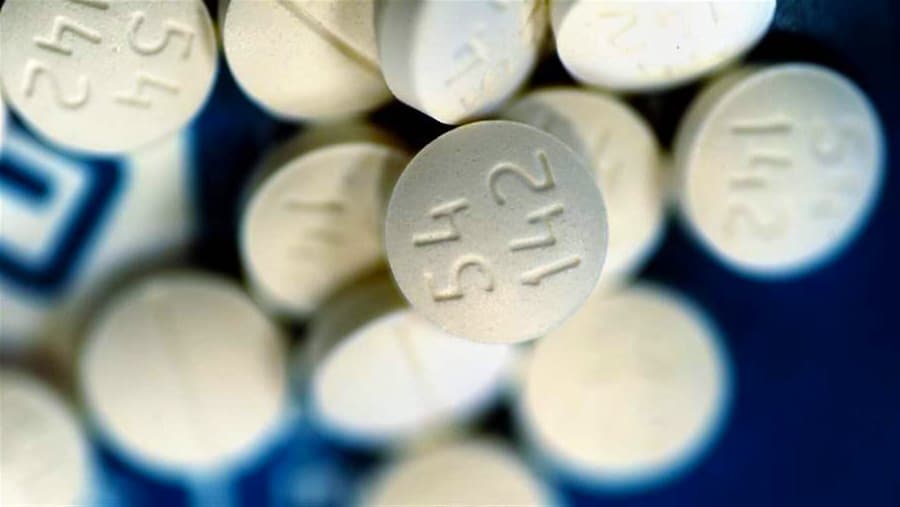What is Methadone?
Pronounced as [meth-uh-dohn]
Methadone belongs to the class of drugs known as opioids. It is a popular prescription drug used to treat moderate to severe pain. It is also commonly used to treat addictions to other opioid drugs especially heroin. Its brand name is Dolophine. It was created by German doctors during World War II and was used in the US to treat people with extreme pain.
What are the Generic and Brand Names for Methadone?
This drug is available in the following generic and brand names:
Methadone Tablets ---------------------------------------------------------- Dolophine
What are the Most Common Street Names for This Drug?
This drug can be bought illicitly with the street names of:
Methadose
Dollies
Dolls
Done
Meth
Phy
Junk
Metho
Jungle Juice
Fizzies, Amidone
Chocolate Chip Cookies
Maria
Pastora
Salvia
Wafer
Juice
What is Methadone Used For?
There are methadone clinics available to people that are addicted to opioid-based drugs. Here, they receive medication based therapy based on this drug. It is usually administered as a pill, liquid, or in wafer form. This drug is used because it can prevent the onset of opioid withdrawal. It can also block the effects of other opioid pain medications through a phenomenon called cross-tolerance.
The use of these drugs in these types of clinics is also very effective in reducing opioid cravings in patients. This is called medication-assisted treatment. In addition to this drug, which is used since the 1960s, other more recently introduced medications include buprenorphine, which is used to relieve drug cravings with fewer side effects; naltrexone, a non-addictive substance, that blocks the effects of opioids and does not cause physical dependence; and an injectable form of naltrexone, known as Vivitrol, that is administered monthly rather than daily like most other opioid treatment drugs.
How does Methadone Work?
This drug works in the same way as any other opioids. They disrupt your brain’s receptors, lessening your perception of pain and floods your brain with dopamine, causing calmness and euphoria.
How Strong is Methadone?
It is relatively strong in its potency compared to morphine with a potency ratio with oral morphine of 4.0. This means that you will only need a 2.5mg dose of this drug to get an equivalent effect from 10mg of oral morphine. It also has a half-life of 24 hours. This simply means that your body will take somewhere around 24 hours to process half of the ingested drug in the blood’s plasma.
How Long Does Methadone Stay In Your System, Blood, Urine, Saliva, Hair?
If you are to undergo a drug test, you may be wondering how long this drug stays in your system.
- Blood test: 30 minutes up to 2-3 days
- Urine test: 1 hour up to 2 weeks
- Saliva test: 1 hour up to 2 days
- Hair test: After a few days up to 90 Days
What are the Short-Term Effects of the Use of This Drug?
Even though it is a drug used to treat addiction, it does not mean that its use is perfectly safe. It also has some negative side effects which include those that can also be seen from most opioid drugs. These effects differ for every person depending on size, weight, health, whether the person is used to taking it, whether other drugs are taken around the same time, and the amount taken. This drug has also been shown to be dangerous when mixed with alcohol or other sedatives such as benzodiazepines. These two together can cause dangerously low blood pressure and respiratory depression.
During use in addiction treatment programs, the patient may also experience other negative effects due to the dosage not being right for them. These effects include: runny nose and sneezing, yawning, feeling weak and difficulty sleeping, high temperature but feeling cold and sweating with goosebumps, tears, irritability and aggression, tremors, muscle spasms and jerking, back and joint aches, and cravings for the drug they were dependent on.
There are also other negative effects associated to its use which include: increased sweating, constipation, appetite disturbances, sexual dysfunction, abnormal menses, urinary retention, rash, blurred vision, sedation, irritability, insomnia, biliary pain, hypoventilation, generalized edema, gynecomastia, galactorrhea in men and women, hepatotoxicity, and gastrointestinal symptoms.
What are the Effects of Methadone Addiction?
Methadone has very similar effects to heroin and other opioid drugs, which also makes it very addictive.
However, for this drug, since it is used as a way to curb addiction and reduce cravings, it is not as heavily regulated as the other opioid drugs. This makes the abuse of this drug easier. Some patients who are using it to overcome heroin addiction also sometimes become addicted to it due to lack of professional supervision.
Tolerance may also develop with the patient, forcing him/her to take more and more of the drug to get the same effect as when it was first used. This can lead to overdose if not addressed properly by a doctor. This drug must only be taken under prescription from a doctor while also strictly following the recommended dosage.
What is the Effect of Overdose to Methadone?
When overdose happens, the patient may experience the following effects: pinpoint pupils, slow pulse and shallow breathing, low body temperature, low blood pressure, poor circulation and dizziness, cold clammy skin with bluish tinge, mental numbness, occasional seizures and coma. When these effects are experienced by the patient, it would be best to call an ambulance immediately.
Methadone is involved in one third of opioid pain reliever-related overdose deaths. The number of poisoning deaths involving methadone increased from 790 to 5,420 between 1999 and 2006.This is assumed to be linked to the drug’s increased use as a pain medication.
What are the Available Treatments for People Who are Addicted to Methadone?
This drug is still very addictive, which makes it very hard for patients to quit its use on their own. Because of this, addiction treatment centers not only give medical help, but also provide support and guidance until complete recovery. Follow-up consultations are also even offered after recovery to make sure that the patient stays on his/her new drug-free path.
Suddenly stopping the use of any drug may cause very adverse and uncomfortable withdrawal effects. Because of this, the first step in treatment of addiction to this drug is slowly reducing the current dose of methadone that the patient is on. This is called tapering. It is continued until the patient’s body is completely free of the drug. This whole process is called detoxification. After this process, addiction treatments are started. This may include therapy (group and individual), education about drug abuse, relapse prevention skills, and the creation of a plan for aftercare.
These treatments can take place on an inpatient or outpatient basis depending on the patient’s preference. Inpatient treatment, historically, has been proven to be much more effective because it offers a very supportive and helpful environment with round-the-clock care. However, some patients still choose outpatient treatments to be able to get treatment while still being able to manage their daily activities and responsibilities.





